新概念第一册Lesson38-39
- 格式:ppt
- 大小:599.50 KB
- 文档页数:27

新概念第一册39课课文39 LessonAfter dinner, Mr. Harris said, "I'm going to a village near here tomorrow, and I shall walk there. If anyone would like to come with me, we'll meet here after breakfast."The next morning, nine people were ready to start. George, however, was not there. George was usually late for everything."Where's George?" asked Mr. Harris."Here he is!" said Tom. George was in the distance, running towards them as fast as he could go."I didn't sleep very well last night," he said. "I had a strange dream. I dreamt that I was a wheel of a car and I was going round and round. When I woke up, I felt very dizzy. Do you think the dream means anything, Mr. Harris?""No," said Mr. Harris, laughing. "Dreams never mean anything."In the village, they went to a little shop and had tea. After that, they walked back to the hotel. They arrived just in time for dinner.Chinese translation:第39课晚饭过后,哈里斯先生说:“我明天要去附近的一个村庄,打算步行去。
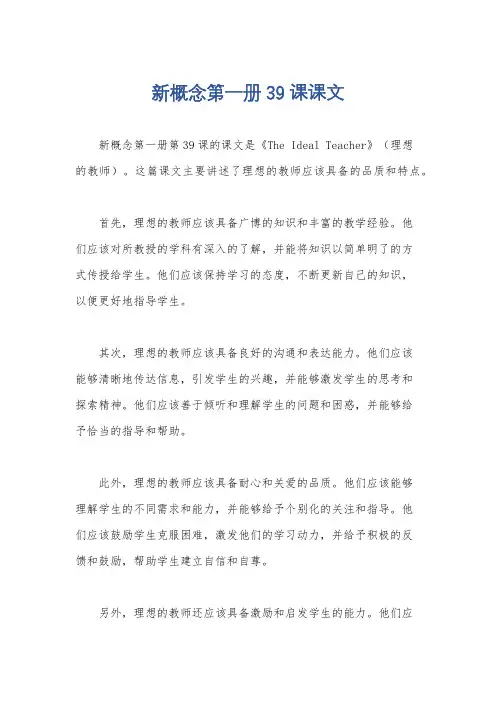
新概念第一册39课课文新概念第一册第39课的课文是《The Ideal Teacher》(理想的教师)。
这篇课文主要讲述了理想的教师应该具备的品质和特点。
首先,理想的教师应该具备广博的知识和丰富的教学经验。
他们应该对所教授的学科有深入的了解,并能将知识以简单明了的方式传授给学生。
他们应该保持学习的态度,不断更新自己的知识,以便更好地指导学生。
其次,理想的教师应该具备良好的沟通和表达能力。
他们应该能够清晰地传达信息,引发学生的兴趣,并能够激发学生的思考和探索精神。
他们应该善于倾听和理解学生的问题和困惑,并能够给予恰当的指导和帮助。
此外,理想的教师应该具备耐心和关爱的品质。
他们应该能够理解学生的不同需求和能力,并能够给予个别化的关注和指导。
他们应该鼓励学生克服困难,激发他们的学习动力,并给予积极的反馈和鼓励,帮助学生建立自信和自尊。
另外,理想的教师还应该具备激励和启发学生的能力。
他们应该能够通过丰富多样的教学方法和活动,激发学生的学习兴趣和创造力。
他们应该能够引导学生思考和探索,培养学生的批判性思维和解决问题的能力。
最后,理想的教师应该是一个榜样和引导者。
他们应该具备良好的道德品质和价值观,以身作则,对学生起到良好的示范作用。
他们应该能够引导学生树立正确的价值观和人生观,培养学生的道德品质和社会责任感。
综上所述,理想的教师应该具备广博的知识、良好的沟通能力、耐心和关爱的品质、激励和启发学生的能力,以及良好的道德品质和价值观。
他们的目标是帮助学生全面发展,培养他们的学术能力、思维能力和品德素养。
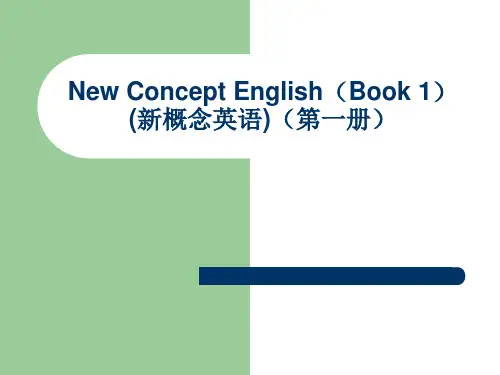
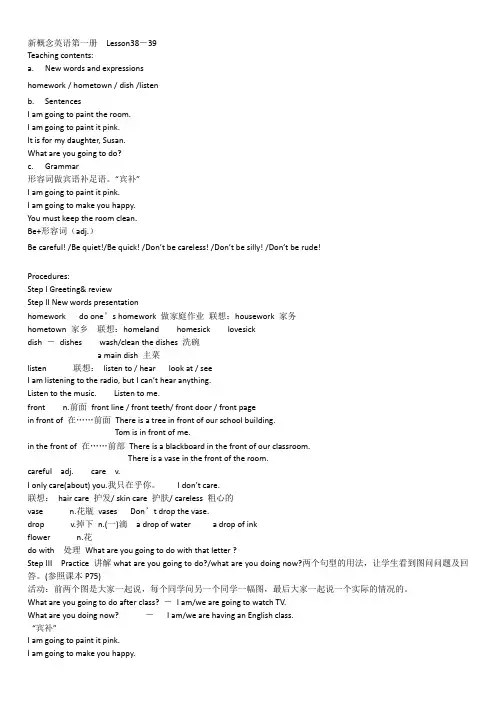
新概念英语第一册Lesson38-39Teaching contents:a. New words and expressionshomework / hometown / dish /listenb. SentencesI am going to paint the room.I am going to paint it pink.It is for my daughter, Susan.What are you going to do?c. Grammar形容词做宾语补足语。
“宾补”I am going to paint it pink.I am going to make you happy.You must keep the room clean.Be+形容词(adj.)Be careful! /Be quiet!/Be quick! /Don’t be careless! /Don’t be silly! /Don’t be rude!Procedures:Step I Greeting& reviewStep II New words presentationhomework do one’s homework 做家庭作业联想:housework 家务hometown 家乡联想:homeland homesick lovesickdish -dishes wash/clean the dishes 洗碗a main dish 主菜listen 联想:listen to / hear look at / seeI am listening to the radio, but I can’t hear anything.Listen to the music. Listen to me.front n.前面front line / front teeth/ front door / front pagein front of 在……前面There is a tree in front of our school building.Tom is in front of me.in the front of 在……前部There is a blackboard in the front of our classroom.There is a vase in the front of the room.careful adj. care v.I only care(about) you.我只在乎你。
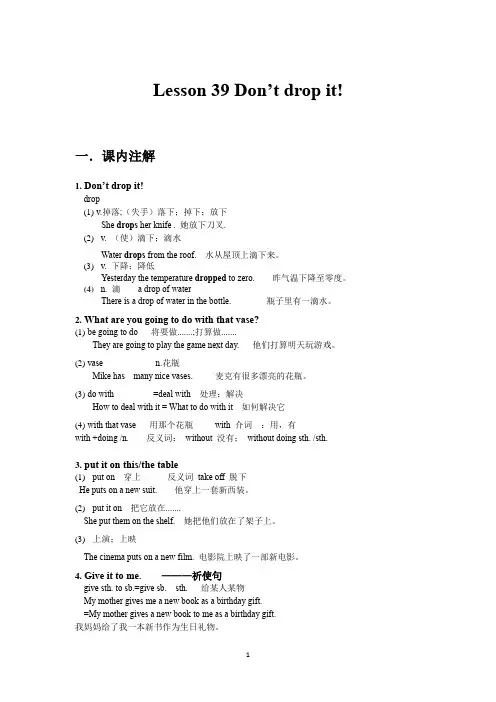
Lesson 39 Don’t drop it!一.课内注解1.Don’t drop it!drop(1)v.掉落;(失手)落下;掉下;放下She drops her knife . 她放下刀叉.(2)v. (使)滴下;滴水Water drops from the roof. 水从屋顶上滴下来。
(3)v. 下降;降低Yesterday the temperature dropped to zero. 昨气温下降至零度。
(4)n. 滴 a drop of waterThere is a drop of water in the bottle. 瓶子里有一滴水。
2.What are you going to do with that vase?(1)be going to do 将要做.......;打算做.......They are going to play the game next day. 他们打算明天玩游戏。
(2)vase n.花瓶Mike has many nice vases. 麦克有很多漂亮的花瓶。
(3)do with =deal with 处理;解决How to deal with it = What to do with it 如何解决它(4)with that vase 用那个花瓶with 介词:用,有with +doing /n. 反义词:without 没有;without doing sth. /sth.3.put it on this/the table(1)put on 穿上反义词take off 脱下He puts on a new suit. 他穿上一套新西装。
(2)put it on 把它放在.......She put them on the shelf. 她把他们放在了架子上。
(3)上演;上映The cinema puts on a new film. 电影院上映了一部新电影。
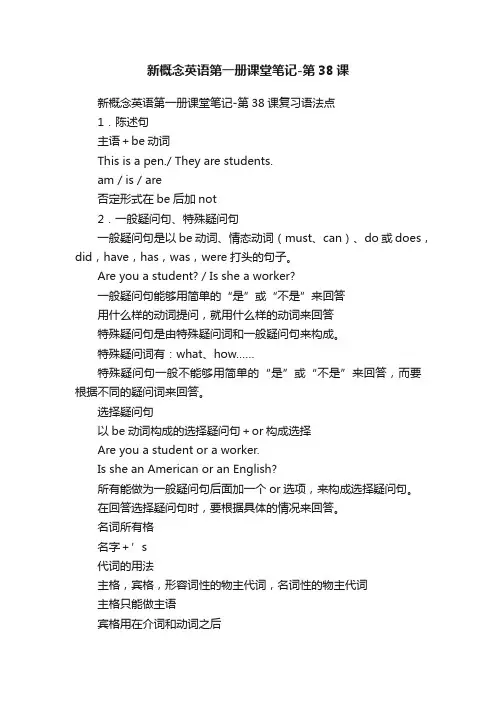
新概念英语第一册课堂笔记-第38课新概念英语第一册课堂笔记-第38课复习语法点1.陈述句主语+be动词This is a pen./ They are students.am / is / are否定形式在be后加not2.一般疑问句、特殊疑问句一般疑问句是以be动词、情态动词(must、can)、do或does,did,have,has,was,were打头的句子。
Are you a student? / Is she a worker?一般疑问句能够用简单的“是”或“不是”来回答用什么样的动词提问,就用什么样的动词来回答特殊疑问句是由特殊疑问词和一般疑问句来构成。
特殊疑问词有:what、how……特殊疑问句一般不能够用简单的“是”或“不是”来回答,而要根据不同的疑问词来回答。
选择疑问句以be动词构成的选择疑问句+or构成选择Are you a student or a worker.Is she an American or an English?所有能做为一般疑问句后面加一个or选项,来构成选择疑问句。
在回答选择疑问句时,要根据具体的情况来回答。
名词所有格名字+’s代词的用法主格,宾格,形容词性的物主代词,名词性的物主代词主格只能做主语宾格用在介词和动词之后形容词性的物主代词不能单独使用,后面要跟名词名词性的物主代词只能单独使用,相当于形容词性的物主代词加名词名词所有格能够是形容词性的,也能够是名词性的。
如果是形容词性时,后面加名词;如果是名词性的,后边不加东西。
介词短语做后置定语一个词来修饰成分时,放在修饰词的前边;而一个词组来做修饰成分时,放在被修饰词的后边。
the book on the desk介词的学习1.跟在be动词之后2.在普通的动词之后put on / take off动词加介词构成新的意义学习介词的规则:1.记清介词本身表示的意义2.1)跟在be动词之后,表示方位(这种情况较多)2)与普通的行为动词构成新的意义名词种类有五种:普通名词、物质名词、专有名词、集体名词、抽象名词可数名词的单、复数概念There be句型1.表示某处有某物2.使用的类型:1)There is…+(单数的可数名词或不可数名词)2)There are…+(可数名词的复数)冠词有不定冠词或定冠词两类。
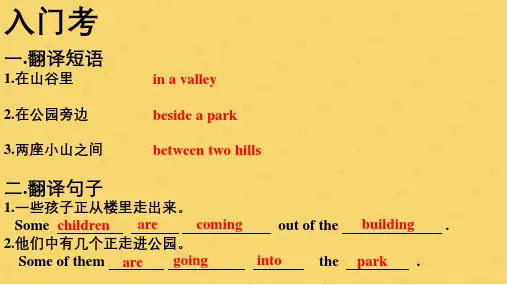

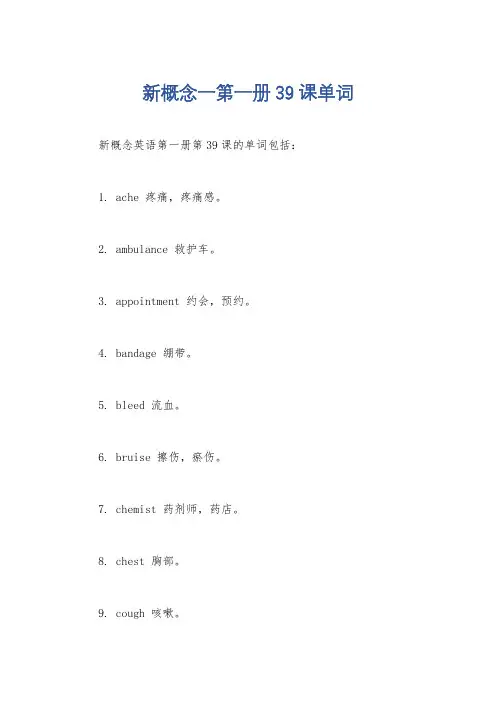
新概念一第一册39课单词新概念英语第一册第39课的单词包括:1. ache 疼痛,疼痛感。
2. ambulance 救护车。
3. appointment 约会,预约。
4. bandage 绷带。
5. bleed 流血。
6. bruise 擦伤,瘀伤。
7. chemist 药剂师,药店。
8. chest 胸部。
9. cough 咳嗽。
10. dentist 牙医。
11. disease 疾病。
12. drug 药物。
13. examine 检查,审查。
14. faint 昏倒,晕厥。
15. fever 发烧。
16. flu 流感。
17. headache 头痛。
18. injection 注射。
19. medicine 药品,医学。
20. nurse 护士。
21. operation 手术。
22. pain 疼痛。
23. patient 病人。
24. pharmacy 药房。
25. prescription 处方。
26. recover 恢复,康复。
27. sore 疼痛的,痛处。
28. stomachache 胃痛。
29. surgeon 外科医生。
30. symptom 症状。
31. tablet 药片。
32. temperature 体温。
33. throat 喉咙。
34. toothache 牙痛。
35. treatment 治疗。
36. virus 病毒。
37. wound 伤口。
38. X-ray X光。
39. yawn 打哈欠。
以上是新概念英语第一册第39课的单词。
希望能对你有所帮助。
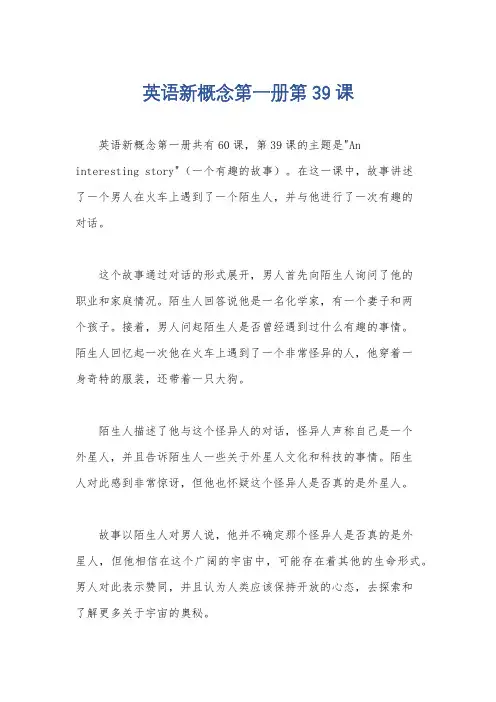
英语新概念第一册第39课
英语新概念第一册共有60课,第39课的主题是"An
interesting story"(一个有趣的故事)。
在这一课中,故事讲述
了一个男人在火车上遇到了一个陌生人,并与他进行了一次有趣的
对话。
这个故事通过对话的形式展开,男人首先向陌生人询问了他的
职业和家庭情况。
陌生人回答说他是一名化学家,有一个妻子和两
个孩子。
接着,男人问起陌生人是否曾经遇到过什么有趣的事情。
陌生人回忆起一次他在火车上遇到了一个非常怪异的人,他穿着一
身奇特的服装,还带着一只大狗。
陌生人描述了他与这个怪异人的对话,怪异人声称自己是一个
外星人,并且告诉陌生人一些关于外星人文化和科技的事情。
陌生
人对此感到非常惊讶,但他也怀疑这个怪异人是否真的是外星人。
故事以陌生人对男人说,他并不确定那个怪异人是否真的是外
星人,但他相信在这个广阔的宇宙中,可能存在着其他的生命形式。
男人对此表示赞同,并且认为人类应该保持开放的心态,去探索和
了解更多关于宇宙的奥秘。
通过这个故事,课文让我们思考了一些关于宇宙和外星生命的问题。
它提醒我们保持对未知事物的好奇心和开放的态度,不断探索和学习。
这个故事也展示了人与人之间的交流和对话的重要性,通过对话,我们可以分享和传递知识、经验和观点。
总的来说,第39课的故事以一个有趣的对话形式呈现,通过描述一个男人与一个陌生人的交流,引发了关于宇宙和外星生命的思考。
这个故事提醒我们保持好奇心和开放的态度,以及交流和对话的重要性。
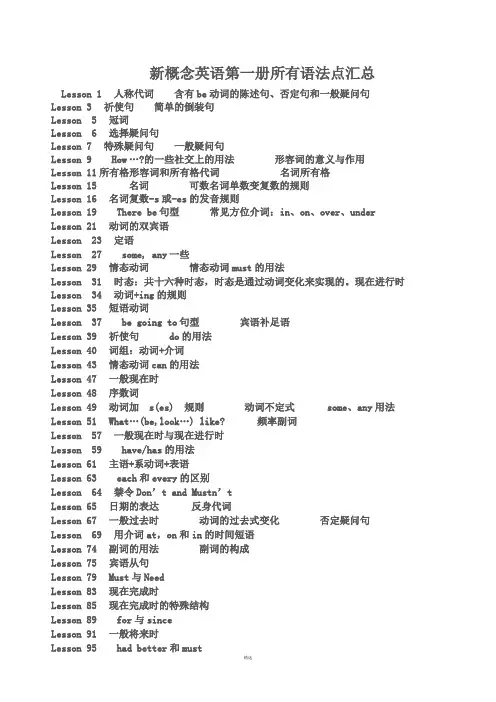
新概念英语第一册所有语法点汇总Lesson 1 人称代词含有be动词的陈述句、否定句和一般疑问句Lesson 3 祈使句简单的倒装句Lesson 5 冠词Lesson 6 选择疑问句Lesson 7 特殊疑问句一般疑问句Lesson 9 How…?的一些社交上的用法形容词的意义与作用Lesson 11所有格形容词和所有格代词名词所有格Lesson 15 名词可数名词单数变复数的规则Lesson 16 名词复数-s或-es的发音规则Lesson 19 There be句型常见方位介词:in、on、over、under Lesson 21 动词的双宾语Lesson 23 定语Lesson 27 some, any一些Lesson 29 情态动词情态动词must的用法Lesson 31 时态:共十六种时态,时态是通过动词变化来实现的。
现在进行时Lesson 34 动词+ing的规则Lesson 35 短语动词Lesson 37 be going to句型宾语补足语Lesson 39 祈使句do的用法Lesson 40 词组:动词+介词Lesson 43 情态动词can的用法Lesson 47 一般现在时Lesson 48 序数词Lesson 49 动词加s(es) 规则动词不定式some、any用法Lesson 51 What…(be,look…) like? 频率副词Lesson 57 一般现在时与现在进行时Lesson 59 have/has的用法Lesson 61 主语+系动词+表语Lesson 63 each和every的区别Lesson 64 禁令Don’t and Mustn’tLesson 65 日期的表达反身代词Lesson 67 一般过去时动词的过去式变化否定疑问句Lesson 69 用介词at,on和in的时间短语Lesson 74 副词的用法副词的构成Lesson 75 宾语从句Lesson 79 Must与NeedLesson 83 现在完成时Lesson 85 现在完成时的特殊结构Lesson 89 for与sinceLesson 91 一般将来时Lesson 99 宾语从句Lesson 100 直接引语和间接引语Lesson 101 反意疑问句Lesson 103 too与enough的用法Lesson 105 动词不定式Lesson 107 形容词的比较级和最高级Lesson 111 形容词的平级比较级Lesson 113 so与neither引导的简短回答Lesson 116 不定代词Lesson 117 过去进行时概念和结构Lesson 119 过去完成时Lesson 121 定语从句Lesson 123 感叹句Lesson 125 must, have to和needn’tLesson 127 表示猜测和推断的情态助动词must和can’tLesson 131 情态助动词may表示可能性Lesson 133 需改变时态的间接陈述句Lesson 135 Let的用法Lesson 137 条件从句Lesson 141 被动语态新概念英语第一册语法点归纳大纲新概念英语第一册语法点归纳新概念一共144课,其中单课为课文,双课为语法和练习。
英语新概念第一册第39课Lesson 39 of English New Concept First Book focuses on the topic of education and the importance of lifelong learning. In this lesson, the author introduces the concept of self-education and encourages readers to embrace the value of continuous learning throughout their lives.The lesson starts with a thought-provoking quote by the American philosopher and writer, Ralph Waldo Emerson, "The only person you are destined to become is the person you decide to be." This quote sets the tone for the lesson and emphasizes the idea that one's education and personal growth are determined by their own choices and efforts.The author then proceeds to discuss the traditional education system, which is based on attending schools and universities. While formal education is essential and provides a foundation of knowledge and skills, the author highlights the limitations of relying solely on formal education. He argues that education should not be confined to the classroom and that individuals should take the initiative to learn independently.Self-education is presented as a lifelong process that goes beyond the boundaries of formal education. It involves cultivating a love for learning, exploring various subjects, and continuously seeking new knowledge and skills. The author mentions the importance of reading and recommends reading as a way to expand one's horizons and gain new perspectives.Furthermore, the author emphasizes the importance of self-discipline and self-motivation in the pursuit of self-education. He mentions that self-education requires dedication and the ability to manage one's time effectively. Developing good study habits and setting achievable goals are essential for successful self-education.The benefits of self-education are discussed in the lesson as well. The author highlights that self-education allows individuals to learn at their own pace and focus on the subjects that interest them the most. It provides the opportunity to explore personal passions and develop expertise in specific areas. Self-education also fosters creativity andcritical thinking, as individuals are encouraged to question and analyze the information they come across.Moreover, the author emphasizes the role of technology in facilitating self-education. He mentions that the internet provides a vast amount of information and resources that can be accessed anytime and anywhere. Online courses, educational videos, and e-books are just a few examples of the resources available for self-education. The author encourages readers to take advantage of these resources and incorporate them into their self-education journey.In conclusion, Lesson 39 of English New Concept First Book promotes the idea of self-education and lifelong learning. It highlights the limitations of traditional education and encourages individuals to take charge of their own education. By cultivating a love for learning, developing self-discipline, and utilizing the resources available, individuals can embark on a fulfilling journey of self-education and personal growth. Remember, education is not just limited to the classroom, and the choice to become a lifelong learner is in our hands.。
新概念英语第一册第38课课文Lesson 38。
In this lesson, we are going to talk about a very important topic: the weather. Weather is something that affects all of us, no matter where we are in the world. It can have a significant impact on our daily lives and activities.The weather can be described in many different ways. We often use adjectives to describe the weather, such as sunny, cloudy, rainy, windy, hot, or cold. These adjectives help us to convey the current weather conditions to others.When we talk about the weather, we often mention the temperature. Temperature is a measure of how hot or cold it is. In English, we use the Celsius or Fahrenheit scale to measure temperature. For example, we might say that it is 25 degrees Celsius or 77 degrees Fahrenheit.Another important aspect of the weather is precipitation. Precipitation refers to any form of water that falls from the atmosphere to the Earth's surface. This can include rain, snow, sleet, or hail. The amount of precipitation can vary greatly depending on the location and time of year.Weather conditions can also be described in terms of wind speed and direction. Wind is the movement of air from an area of high pressure to an area of low pressure. We often use terms like calm, breezy, windy, or gusty to describe the strength of the wind.Different types of weather can have different effects on our daily lives. For example, a sunny day might be perfect for outdoor activities like going to the beach or having a picnic. On the other hand, a rainy day might be better suited for staying indoors and reading a book.Extreme weather conditions, such as hurricanes, tornadoes, or blizzards, can be very dangerous and destructive. It is important to stay informed and take necessary precautions when severe weather is forecasted.In conclusion, the weather is an integral part of our lives. It can influence our mood, activities, and even our safety. By understanding and being aware of the weather conditions, we can better plan and adapt to our daily lives. So next time you step outside, take a moment to appreciate the weather and its impact on our world.。